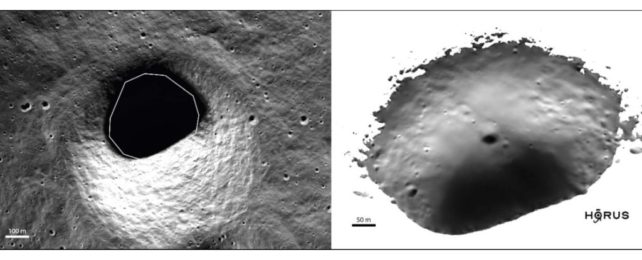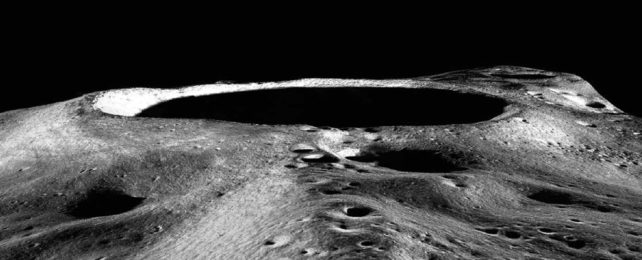It's a common misconception that the Moon has a "dark" side. Like a rotisserie chicken, the Moon's rotation ensures a nice, even sunbathe around its equator.
But there are pockets that never receive any rays: deep craters and pocks at high latitudes, in the Moon's polar regions, with high walls that protect the crater floor from harsh solar radiation.
In these mysterious Moon holes, which maintain freezing temperatures around -163 degrees Celsius (-260 degrees Fahrenheit), scientists believe there may be all sorts of interesting things.
Well, mainly one: water ice, in patches up to several meters thick.
We likely won't know for sure until at least 2024, the year NASA plans to send astronauts up to our li'l lunar buddy to check it out… but in the meantime, scientists have found a way to illuminate those shadowed regions for a sneak peek.

The results could help decide which of the 13 candidate landing regions is the most likely to yield the best science, as well as understand the permanent cold, dark places that represent one of the Moon's most mysterious frontiers.
First, the bad news: according to glaciologist Valentin Bickel of ETH Zurich in Switzerland, who led the research, it looks like we're going to have to dig for ice.
"There is no evidence of pure surface ice within the shadowed areas, implying that any ice must be mixed with lunar soil or lie underneath the surface," Bickel says.
It might seem that looking into permanently shadowed regions on the Moon is an impossible ask; however, while direct sunlight may not reach the crater floors, the holes aren't completely lightless.
Some light – not much, but some – does bounce off nearby mountains and crater walls into the shadowed areas, and is picked up by the Lunar Reconnaissance Orbiter (LRO) presently joyriding around the Moon.
That data is, unfortunately, too noisy to make out details of what's in the craters.
Enter a machine learning algorithm called Hyper-effective nOise Removal U-net Software (HORUS). It can clean up the noise in the LRO data and reveal what's lurking in the shadows on the Moon.
The team deployed HORUS to image 44 permanently shadowed regions with a diameter of more than 40 meters (130 feet) in the Artemis exploration zone. These images were able to resolve meter-scale features – information that will aid in planning lunar exploration, the researchers said.
"Visible routes into the permanently shadowed regions can now be designed, greatly reducing risks to Artemis astronauts and robotic explorers," explains geologist David Kring of the Lunar and Planetary Institute and NASA.
This is particularly valuable since the Artemis spacesuit will only provide a limited amount of time in the cold of the shadowed craters; current designs allow for just two hours. Being able to efficiently map which features to visit and which to avoid will maximize those hours.
Robotic missions will also benefit from the data.
Later this year, NASA will be sending a robotic lander to the lunar south pole, not far from one of the Artemis candidate landing regions. The findings of the team's analysis of LRO data will have implications for that mission, too.
"We detect an approximately 50-meter-wide crater and other surface features in a shadowed region that may alter the location where the Intuitive Machines' hopper touches down later this year," Bickel says.
If you're going to land on the Moon, it's best to know ahead of time what you're getting into.
The team's research has been published in Geophysical Research Letters.
